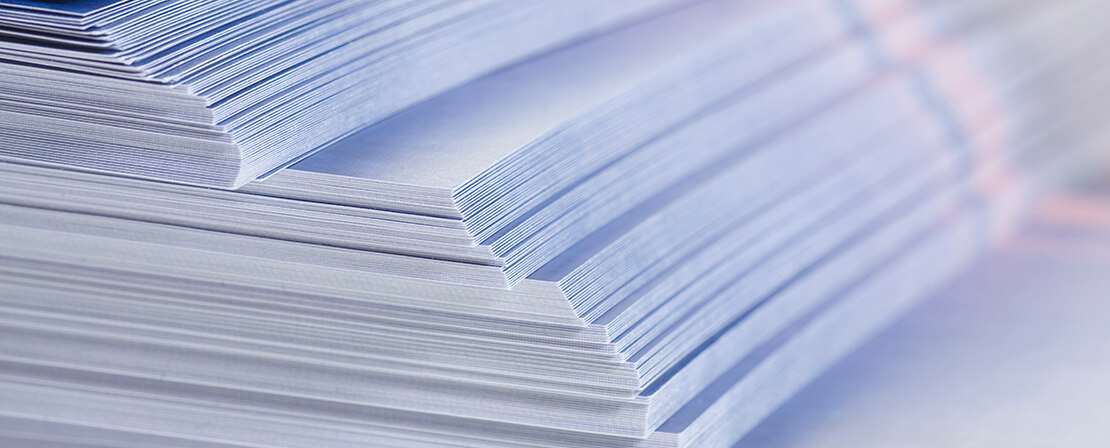Updated on: 29th June
If you’ve ever looked at printing your own flyers, business cards or other marketing materials, you may have noticed that the stocks – or the paper they’re printed on – are described using something called ‘GSM’.
Choosing the right GSM paper for your printed materials is essential so, to help make sure you’ve got everything you need to make an informed choice, we created this quick beginner’s GSM paper guide and a guide to paper weight to get you started.
What does GSM paper mean in printing?
GSM stands for ‘grams per square metre’ and refers to the weight of the paper. The heavier the paper, the higher the number of grams per square metre – and, generally, the higher the perceived quality of the stock.
This is sometimes referred to as the paper’s ‘grammage’.
For example, a 150gsm flyer is thin and easy to fold or bend, whereas a 250gsm flyer is a lot thicker and takes more effort to fold.
To find out this measurement, a square metre of the paper is cut to size and weighed. When it’s cut down to the correct size (e.g. A5 for an A5 flyer), it will obviously weigh less, but it would still be the same GSM because GSM is measured per square metre.
GSM paper guide: why do different GSMs exist?
Simply put, different products suit different GSMs. For example, a greetings card needs to be a heavier stock than a poster because greetings cards need to be free-standing when displayed, whereas a poster is usually stuck to a wall or framed.
Another great example is letterheads. Letterhead paper needs to be heavy enough to feel premium when received by a client, but thin enough to run through a standard office printer to print out the letter.
Bulk flyers for posting through letterboxes or takeaway menus are generally printed on thinner stocks because it’s more cost effective, whereas restaurant menus are printed on thicker stocks because they’re more likely to be reused.
Thinner stocks generally connote a lower quality, whereas thicker tends to feel more impressive. That’s why our premium business card range is available on 450gsm – a lot thicker and higher quality than the standard 350gsm cards most printers offer.
So, should I go for the lowest GSM to save money?
If you follow our GSM paper guide, it would suggest that choosing a lower GSM may save you money – but make sure you consider all of the options first.
That’s because a heavier GSM is also longer-lasting. For example, if you only need to hand out flyers to promote an event that’s on tonight, a 120gsm A5 flyer would be ideal for keeping costs down. However, if you want to put flyers in an exhibition goodie bag, you’ll want your flyer to last as it is passed around the office when people go back to work. In this case, 350gsm might be better.
Guide to paper weight: what are the different GSM paper weights?
Here’s a list and description of all the different paper weights available when you print online with instantprint and what they might each be used for.
- 70-90gsm – This is a thin paper that’s typically used for the lined inside pages of a notebook.
- 90-100gsm – This paper weight is most commonly used in household and office printers.
- 120-150gsm – Most thin flyers and takeaway menus are printed on this weight of paper as well as movie posters.
- 200-300gsm – This weight is stiffer but will still bend. It’s used a lot for magazine covers as well as higher-quality flyers and menus.
- 350-450gsm – This is a thick card-like stock that’s harder to bend. It’s used for a range of different print materials such as business cards, greetings cards, postcards and table talkers.
Got more questions about GSM?
If you’ve read our GSM paper guide and you’re still not sure about the best GSM for your product, don’t fret! We have a handy blog that shows all the different paper stocks we have on offer for every print item we sell right here along with pictures to help you compare.
You can also always order our free sample pack to get an idea of the different paper weights, stocks, and finishes that are available.
If you’re still confused or need advice on a specific product, remember that our friendly customer service team are on hand to help! Give them a call on 0191 2727 327 or click the orange live chat button and they’ll provide you with free advice about your next print project.





.png)